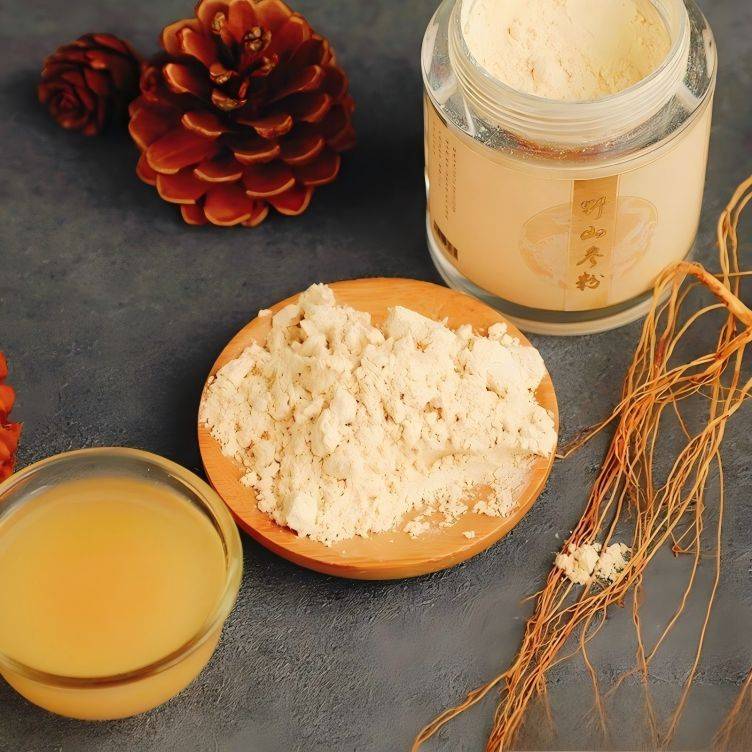항균에 좋은 인삼 추출물에 관한 연구
항생제 항균은 최근 수십 년 동안 크게 개발되고 연구되었다.비록 그것의 항균 효과는 매우 효과적이지만, 여전히 결점이 있다.장기간 항생제를 불합리하게 사용한 후에는 진균 및 세균의 저항성 증강을 동반하여 임상적으로 내성이 있는 균주를 증가시킬 것이며, 임상감염질환의 사망률 또한 증가하고 있다.또한, 항생제는 알레르기 반응, 독성반응, 초감염을 일으키거나 부작용 및 기타 부작용을 악화시킬 수 있다 [1].페니실린과 같이 일반적으로 사용되는 일부 항생제는 다른 부작용을 유도할 수 있다.예를 들어, 아미노글리코사이드는 신장과 내이에 해로울 수 있다.요즘 의학계는 약제 내성 세균에 의한 세균 내성과 감염이라는 큰 문제에 직면하고 있다.현재 거의 모든 항균제에 내성균이 나타났으며, [2] 내성균의 문제에 대한 해결책을 찾는 것이 시급하다.
한의학은 세균성전염병치료에서 독특한 항균기전이 있고 약제내성이 생기지 않으며 약제내성의 발병을 되돌리는 효과가 있다.인삼 is a traditional Chinese medicinal herb known worldwide. It is rich 에서active ingredients 그리고has comprehensive functions. With in-depth research on 이active ingredients of ginseng, ginseng antibacterial activity has gradually attracted attention and become a research hotspot.
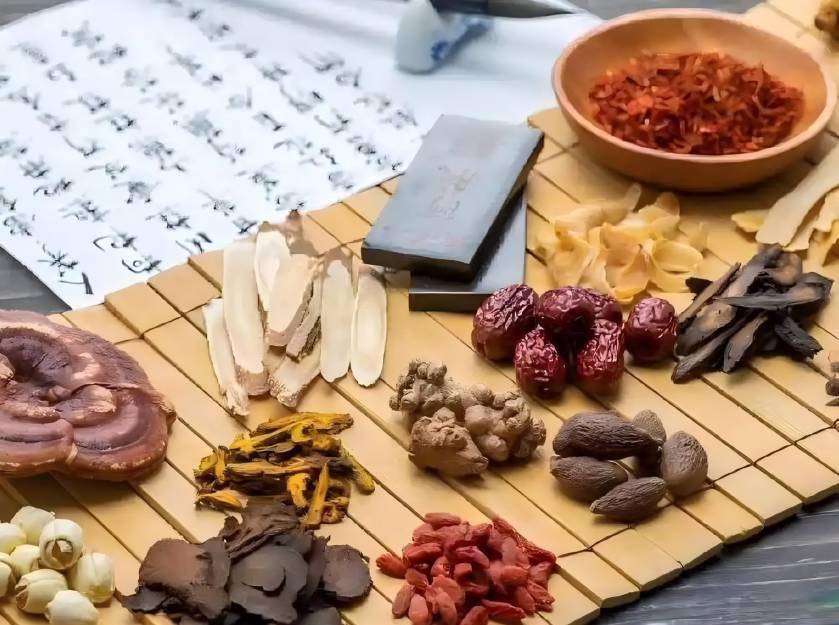
세균을 억제하는 한약의 장점 1
의학계는 항상 안전하고 효과적인 항균제를 찾는 데 전념해 왔습니다.항생제의 여러가지 결점에 비해 세균을 억제함에 있어서 한의학은 독특한"매력"을 보여주고있다.전통 한약은 널리 이용가능하고, 자연적이며, 저렴하다.항염증, 항바이러스, 인체의 면역기능을 조절하는 효과가 있다.이런 이유로 박테리아를 억제하는 한의학은 연구 난점 중 하나가 되었다 [3].중국은 귀중한 중국의 약초가 풍부한 광활한 나라이다.이런 약초들은 감염관리와 현대의학에서 모두 독특한 장점을 가지고 있다.한의학은 약을 먹는 특별한 방법이 있는데, 천연적이고, 종류가 매우 다양하며, 종합적인 작용 방식 [4]이 있다.
천연물로부터 항균약품자원을 찾고 항균약품을 선별하는 연구는 국내외 학자들의 날로 많은 주목을 받고있다.한의학에 대한 연구가 심화됨에 따라 한의학은 항균 및 세균성 효과뿐만 아니라 세균의 내약성을 지연시키고 제거하는 효과가 있음이 밝혀졌다 [2, 5].Zhang Yingluo 등 6명은 여러 병원성 세균에 대한 15가지 한약 성분의 항균 활성을 연구하여 Zanthoxylum bungeanum Maxim의 추출물을 발견했다., Atractylodes lancea, Aquilaria sinensis, Artemisia vulgaris, Cardamomum zeylanicum은 항균효과가 좋았다.또한, 여러 연구에서 인동덩굴 잎에서 추출된 활성 성분,녹차등 항균활성도 좋다 [7-9].
2. 한의학의 항균 메커니즘 (Antibacterial mechanism of 한의학
임상 환경에서 흔히 볼 수 있는 그람 양성 약물 내성 세균에는 메티실린 내성 황색포도상구균 (MRSA)이 있다.중국에서는 MRSA 감염의 발생률이 높고, 약제에 내성이 있는 결핵균과 칸디다의 비율도 증가하고 있다 [10].
약제내성균이 증가함에 따라 임상치료에 큰 어려움이 있으며, 이러한 약제내성균은 인간의 건강에 큰 위협이 되고 있다.약제내성균이 계속 늘어나고 약제내성이 커지고있는 상황에서 조기발견과 한의학의 치료적우점은 의심할바없이 무엇보다 중요하다.현재 한의학의 항균 기전은 주로 다음과 같은 4가지 방면을 포함한다:1) 세균 세포체의 세포벽과 세포막의 온전성을 손상시키거나 세균 세포벽의 합성을 방해한 후, 세포로부터 내용물이 대량으로 손실되면 세포벽이 방어 기능을 잃게 되고, 세포막의 수송 기능을 변화시키며, 경막 정보 전달을 방해하게 된다 [11].
결국 세균은 저산소 환경에서 터지거나 전해질 균형의 불균형으로 죽는다.2) 세균성 단백질 합성에 대한 효과.단백질은 세포와 유기체에서 생명과정의 주요한 전달자이다.단백질은 신체의 중요한 부분을 형성하는 데 관여한다.세균의 리보솜과의 상호작용은 단백질 합성을 저해하여 [11] 세포 생존에 필수적인 단백질과 효소의 합성을 막는다.3) 유전물질인 DNA나 RNA의 합성에 영향을 주어 세균의 번식과 성장을 억제하는 동시에 단백질을 합성하기 위한 mRNA의 번역에도 영향을 주어 세균의 성장을 억제한다 [11].4) 세균의 생체 조직의 형성을 억제한다.한의학은 세균의 생체조직으로 인한 감염을 효과적으로 예방하고 치료할 수 있다.관련 연구에 따르면 이는 주로 생체 세포막 형성에 필요한 글루코실 트랜스페라제를 억제하여 생체 세포막 형성을 막으며 [12], 세균의 밀도 인식 (Quorum-sensing, QS)의 분자 신호체계를 조절하는 것으로 나타났다.
인삼 성분 및 기능 3
의 여러 종류가 있습니다traditional Chinese medicine, and ginseng is a perennial herb that is one of the traditional precious Chinese medicinal materials. The cultivation of ginseng has a history of more than 1,600 years, and large-scale cultivation has also been carried out for more than 400 years[13] . Ginsenosides are considered to be the main active ingredient of ginseng and have always been a hot research topic for scholars and drug developers at home and abroad. There is no significant difference between the various types of ginseng in terms of their use. All ginsengs contain ginsenosides, and the pharmacological activity of ginseng is often attributed to ginsenosides. Most research on the pharmacology of ginseng focuses on ginsenosides[14] .
Ginsenosides can be divided into different types (protopanaxadiol-type ginsenosides, protopanaxatriol-type ginsenosides and oleanolic acid-type ginsenosides) according to the aglycone. These three types of ginsenosides contain many different components. Some ginsenosides are not only found in the roots and leaves of ginseng, but also in other parts of the plant (such as stems and leaves, above-ground stems, flowers, buds, fruits, and seeds). In addition, ginsenosides are not only found in ginseng and red ginseng, but also in other traditional Chinese medicines (such as Korean ginseng, American ginseng, Panax notoginseng, and Gynostemma pentaphyllum) [15]. Li Yang et알다.[16] stated in their research progress on the chemistry and pharmacological effects of ginseng that the main components of ginseng that exert antibacterial effects are ginsenosides, ginseng polypeptides, ginseng polysaccharides, and volatile oils. Chen Qun et al.[17] showed that ginseng polysaccharides have immunostimulatory and antitumor effects, and have a certain degree of bactericidal effect.
4. 진세노사이드 (ginsenosides)의 세균성 효과와 연구 진행
4.1. 박테리아를 억제하는 ginsenosides에 대한 연구
ginsenosides의 세균성 효과에 대한 연구를 위해 다양한 연구 방법과 박테리아의 선택이 있습니다.다양한 종류의 세균과 방법의 선택은 세균성 효과의 연구 결과와 상당한 관련이 있습니다.일찍 1995년에 리지평 등 [18]은 세균의 대사를 촉진하는 관점에서 인삼이 황색포도상구균에 미치는 영향을 연구하기 위해 미세열량법을 사용하여 세균의 성장속도와 인삼의 농도와의 관계를 보여주는 곡선을 얻었는데 이는 인삼이 황색포도상구균의 대사를 촉진시킬 수 있다는 것을 나타낸다.
조준링 등 19명이 대장균의 생물학적 열 생성에 미치는 ginsenosides Rg1, Rd 및 Rb1의 영향을 조사하였다.그 결과 ginsenoside Rd는 대장균의 열 생성을 유의적으로 억제하였으며, Rg1과 Rb1의 억제 효과는 약하였다.설명:인삼 saponin Rd는 박테리아의 에너지 대사를 조절하여 대장균을 억제할 수 있습니다.일부 연구에서는 인삼 추출물과 인삼 사포닌 Rbl을 소에 투여한 후, 체내의 황색포도상구균에 대한 항체 역가가 높아지고, 림프구 증식능력이 강해지며, 단성체 사포닌 Rbl의 효과가 더 좋아진다는 것을 보여주고 있다인삼 추출그리고 Rb1은 항균 효과가 좋을 뿐만 아니라 포도상구균으로 인한 염증을 어느 정도 줄여준다 [20].임상 연구에서도 바이후 지아간셴탕으로 치료를 받은 하부 호흡기 감염을 일으키는 다제 내성균으로 입원한 환자에서 병원성 세균이 효과적으로 제거되지는 않았지만 발열 증상이 어느 정도 호전되고, 체내 백혈구가 현저히 감소해 body', s의 염증이 점차 감소되였다.바이후 지아간셴탕은 다제 내성균의 독성과 활력을 억제하고 감소시켜 [21] 몸을 식민화하게 할 수 있다.
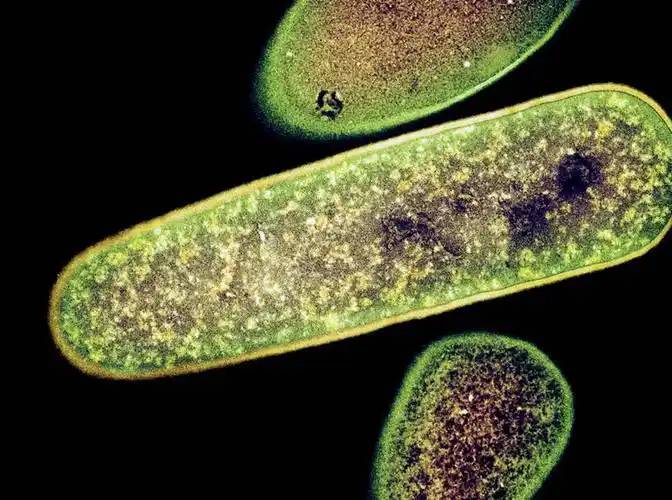
Liu Fangfang et al. [22]studied the antibacterial mechanism of ginseng total saponins푸사리움 솔라니 (Fusarium solani)를 상대로.그 결과 인삼 줄기와 잎 총 사포닌은 세포막의 투과성을 변화시켜 세균의 다량의 단백질과 세포 내 물질의 배출을 유도함으로써 세균의 활성을 억제할 수 있음을 알 수 있었다.동춘래 [23]는 대장균 (Escherichia coli)과 황색포도상구균 (Staphylococcus aureus)을 시험균주로 사용하여 대황산 (rhubarb acid), magnolol, baicalein 및 인삼 사포닌 (ginsenosides)의 항균효과를 연구, 비교하였다.그 결과 대황산, 마그놀롤, 바이칼린은 대장균 세균액에 대해 상응한 억제효과가 있는 것으로 나타났다.인삼 사포닌은 대장균에 대한 억제 효과가 세 가지보다 강하다.동시에 5 종의 protopanaxadiol saponin 단량체의 항균효과를 비교하여 ginsenoside Rc 가 대장균에 대한 억제효과가 가장 우수함을 확인하였다.다른 연구 결과에 따르면 염화 베르베린, ginsenoside Rb1, baicalin 및 chlorogenic acid는 모두 대장균 및 황색포도상구균에 대해 일정 수준의 항균 활성을 가지며 항균 활성은 농심 의존적인 효과가 있습니다.그리고 진세노사이드 Rb1과 베르베린 염산염은 클로로겐산과 바이칼린보다 같은 약제 농도의 살균효과가 더 좋다 [24].
4.2 Ginsenoside 저해 세균 생체막 연구
Bacteria with biofilms are highly resistant to antibiotics and the host immune defense system. The 저항exhibited by bacterial biofilms may be due to the action of some bacteria within the biofilm. Under specific survival conditions, these bacteria can acquire virulence genes, drug resistance genes, etc., thereby exhibiting a protective biofilmphenotype, which in turn alters various physiological functions such as multiple drug resistance [23]. Existing studies have shown that there are two specific drug resistance mechanisms: those that are due to the production of inactivating enzymes (or deactivating enzymes) by the bacteria and changes in the target site of the antibiotic, and those that are due to the impermeability of the bacterial cell membrane or the enhanced function of the pump-out system on the cell membrane and the formation of a bacterial biofilm. These mechanisms of drug resistance are often less specific, and it is more difficult to obtain effective drugs for the study of drugs for bacterial biofilms. [25] .
현재 세균저항성의 증가, 약제저항성 균주의 증가, 세균감염의 치료가 어려운 것은 모두 세균의 생체조직의 형성과 밀접한 관계가 있다.특히 황색포도상구균은 연부조직, 혈관내장치, 의료기기 등의 표면에 생체막을 형성하기 쉬워 치료를 더욱 어렵게 한다 [26-27].항생제는 세균에 대한 살균 효과는 좋지만 일부 세균성 생물막에 대한 억제 효과는 크지 않다.또한, 바이오필름은 소농도 항생제의 작용으로 유전자 돌연변이가 발생하기 쉬우며, 약제 내성 유전자의 생성을 유도하고, [28]바이오필름 신호전달의 특성에 따라 세균성 바이오필름의 약제내성을 향상시킨다.따라서 바이오세포가 항생제의 기능을 차단함으로써 발생하는 내성은 현재 연구의 초점이 되고 있으며 또한 어려운 문제이다.
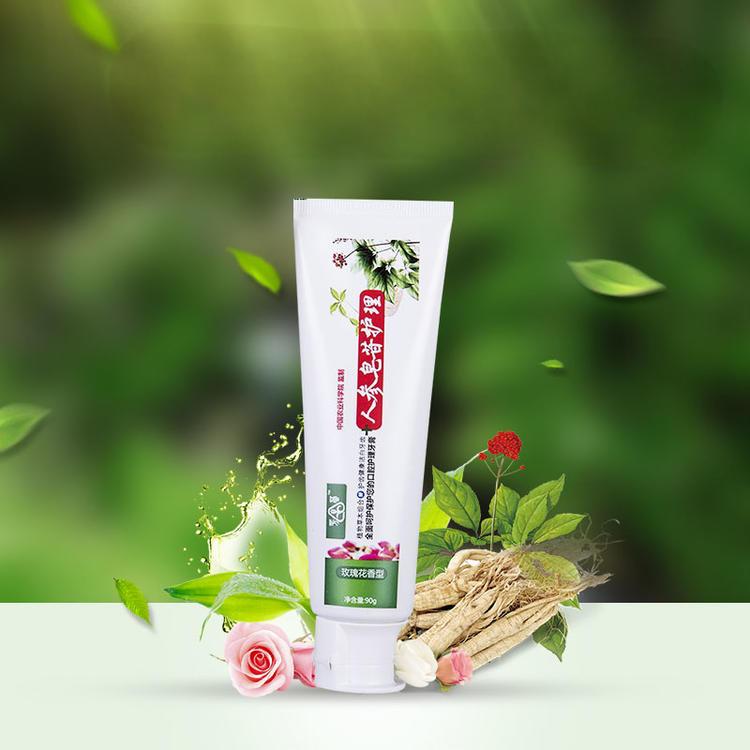
동춘래 [23]는 대장균과 황색포도상구균의 BBF 모델을 통해, 진세노사이드가 황색포도상구균 생체 조직에는 약한 억제 효과를 보이지만, 대장균 생체 조직에는 강한 억제 효과를 보인다는 것을 발견했다.Ginsenosides Rc와 Rb2는 대장균 생체 조직을 효과적으로 억제 할 수 있습니다.안지홍 등 [29]은 황색포도상구균에 대한 인삼 사포닌의 항균 메커니즘을 연구하였다.그 결과 Rh2는 황색포도상구균의 증식에 큰 영향을 미치지 않았으나 다당류 유착의 조절을 통해 유전자인 ica (ica A, ica B, ica C)의 발현을 억제함으로써 황색포도상구균 생체막의 형성을 효과적으로 억제하여 생체막의 부착능력을 저해할 수 있었다.
4.3인삼 사포닌 등 약물이 시너지 항균 효과가 있다
장 등 [30]이 사용했다ginseng saponin Rh2 in combination with ciprofloxacin to treat Staphylococcus aureus, and the results showed that Rh2 can promote the bactericidal effect of ciprofloxacin by inhibiting the expression of the NorA gene. Recent studies have found that sub-inhibitory concentrations of gentamicin, ciprofloxacin and vancomycin have no significant inhibitory effect on Staphylococcus aureus biofilms, but the combination of ginsenoside Rh2 and antibiotics can promote the inhibitory effect of the three antibiotics on biofilms, and have a synergistic effect on the inhibition of biofilms [29]. Dong Chunlei [23] studied and compared the antibacterial effects of ginsenosides in the study of the inhibitory effects of ginsenoside monomers and ginseng monomers in combination with other traditional Chinese medicine monomers on bacterial biofilms. not only proved that ginsenosides inhibit bacteria and bacterial biofilms, but also demonstrated that the combination of ginsenosides with drugs such as rhubarb acid, magnolol, and baicalein has a synergistic and additive effect, which can significantly enhance the ability to inhibit bacteria and bacterial biofilms.
ginsenoside 항균연구의 한계점 및 전망 5
진세노사이드 (Ginsenosides)는 박테리아와 박테리아 생체 조직을 억제하는 강한 활성을 보인다.그들은 현재 박테리아의 내약성 문제를 해결하는 데 도움을 줄 수 있지만, 진세노사이드에 대한 현재 연구에는 여전히 많은 제한점이 있습니다.기존 연구 결과에 따르면 진세노사이드는 대장균과 대장균 박테리아 생체 조직에 강한 억제 효과가 있지만, 이를 완전히 제거할 수는 없다.Ginsenosides는 황색포도상구균에 대한 억제 효과가 약하며, 다른 많은 세균에 대한 억제 효과는 아직 알려져 있지 않다.또한 한약재의 항균방법에 대한 심도 있는 연구가 부족하여 현재 한약재의 특성을 반영한 완벽한 In vitro 항균평가방법이 없는 실정이다.이는 현재 진세노사이드에 대한 연구의 한계점이기도하다.
ginsenosides의 항균성은 박테리아 종에 따라 다른 영향을 미친다.세균종에 따라 약제내성기전이 다르고 약제내성의 정도도 다르다.항균 효과의 강도는 다른 요인 (예:배양액) 과도 관련이 있습니다.실험결과, 생체내 환경을 모사하기 위해 설정된 배양액에서 얻어진 결과는 병원성 세균이 ginsenosides에 강한 저항성을 가지고 있음을 보여주었다.그러나 복잡한 내부 환경은 완벽하게 시뮬레이션하기 어려우며, 시험관 배양시 결과에 지장을 줄 수 있는 많은 현상에 부딪힐 수 있습니다.체외에서의 항균활성에 대한 연구는 늘 여러가지 요소의 영향을 받아 연구에 불편과 오류를 초래할수 있다.in vivo와 in vitro 간의 실험환경의 차이로 인해 실험에서 얻어진 ginsenoside의 항균효과에 차이가 있을 수 있다.따라서 in vitro 에서는 ginsenosides의 항균효과를 더 잘 발휘하기 위해서는 생체내 환경을 최대한 포괄적으로 모사할 필요가 있다.
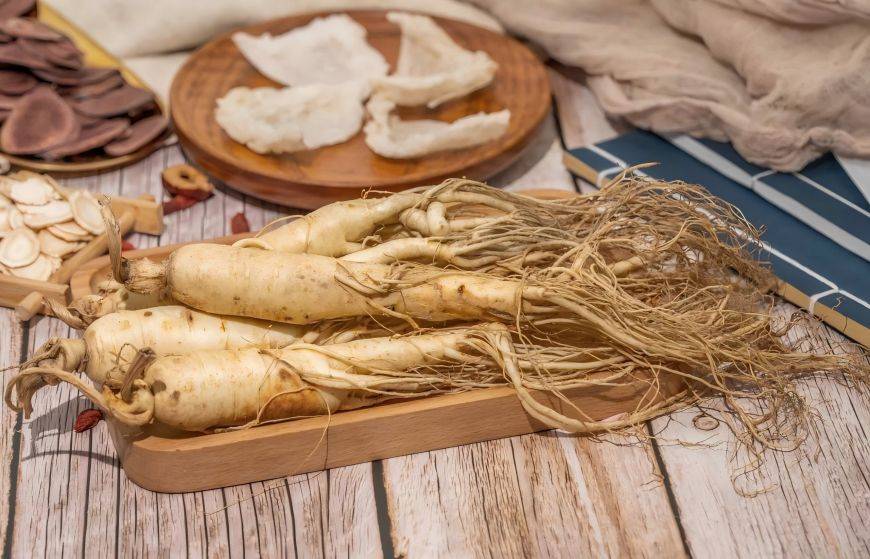
현재 개별 진세노사이드의 항균효능에 대한 연구는 시작되었으나 진세노사이드의 조성 및 용량에 대한 연구는 아직 상대적으로 미약하며, 향후 연구에서 이러한 것들이 더욱 강화될 필요가 있다.진세노사이드는 양방향 조절효과를 가지고 있으며, 관련 질환의 조절과 약물의 합리적인 조합 및 사용 (호환성)을 통해 더 나은 기대 치료효과를 얻는 방법 또한 향후 연구의 핵심 방향이다.ginsenosides의 항균 효과에 대한 연구를 진행하고 관련 신제품을 개발하는 것은 임상 치료의 요구를 충족할 뿐만 아니라 China&의 더 많은 발전에 도움이 됩니다#39;s 인삼산업.따라서 인삼의 항균기작에 대한 연구를 수행하는 것은 인삼의 개발 및 이용에 필수적이다.진세노사이드가 세균의 밀도인식 신호전달체계, 세포내 신호전달, 관련 유전자의 발현조절에 개입하는 기전은 진세노사이드 &에 대한 연구의 초점이 될 것이다#39;세균의 생체 조직 형성에 개입.
참조
[1] 황율란.[의약학] 항생제의 합리적 적용과 부작용에 대한 임상적 방안에 대한 고찰.북부약국, 2017, 14(1):145-6.
[2] 리루이밍, 레이자오시아.박테리아 저항성을 퇴치하기 위한 전략:박테리아 저항성을 지연시키고 역전시키고 약물 내성 박테리아에 의한 감염을 치료하기 위한 전통 한의학의 사용에 대한 연구.의학과 철학 (임상의사결정포럼판), 2006, 27(8):45-7.
[3] 후진팅, 마핑, 천야오 등이 있다.최근 한의학에 의한 세균성 생체조직의 예방과 제어에 관한 연구 및 그 활성성분 [J.아시아-태평양 전통의학 (Asia-Pacific Traditional Medicine), 2016, 12(24):59-61.
[4] 리야나, 타칭춘.한의학 항균에 대한 연구 현황 및 생각.International Journal of Laboratory Medicine, 2014, 35(2):198-200.
[5] 키잔준, 왕원린, 리수드.진세노사이드 Rg1이 NOX3-induced liver fibrosis in Schistosoma japonicum[J]에 미치는 영향.Chinese Journal of Pathogenic Biology, 2017, 12(5):385-8, 393.
[6] 장잉루오, 인케이핑.15 종의 한약재 추출물의 여러 식물병원성 곰팡이에 대한 항균활성에 관한 기초 연구.Journal of Northwest A&F University (Natural Science Edition), 2005, 33(S1):175-7.
[7] 우슈펜, 바이얀.인동덩굴 잎에서 약용성분 추출 및 항균검사 [J.한국한의학, 2001, 23(6):448-449.
[8] 천리홍, 도옌, 시징.Staphylococcus aureus와 Pseudomonas aeruginosa에 대한 차 폴리페놀의 세균성 기작 (J. Microbiology Bulletin, 2010, 37(11):1628-33.
판지아, 타오유웨이, 한수 등 中韓 스타들의 쌩얼 대공개 (9)녹차의 항균효과 및 그 활용방안에 대한 실험적 탐색.실험기술과 관리 (Experimental Technology and Management), 2018, 35(6):190-2.
[10] 장수애, 장순원, 우팽 외.ubiquitous like proteasome 시스템에 의한 mono-isoniazid 저항성을 갖는 결핵균의 약제내성 기전 연구 (J.중국병원성생물학회지 2017, 12(6):489-94.
[11] 한약재 유효성분의 항균기전 연구 Shi W.과학기술정보, 2011 (5):37, 49.
[12]시 QP, 탱리, 왕 QF 등.인공구강 내 gallnut의 항균플라크 biofilm 효과에 관한 연구. 대한내과학회지 및 치주과학회지, 2004, 14(3):148-50.
[13] 자오위, 양페이, 장신 등.재배기 인삼뿌리의 여러 산화환원효소의 활성 변화에 대한 연구 (J.대한요녕학회지 2012, 39(8):1586-8.
[14] 류디.HEK-293세포에서 산화스트레스 손상에 대한 ginsenosides의 시너지 억제 및 그 기전 연구 [D].지린대학, 2016.
[15] 왕 하이난.진세노사이드 (ginsenosides)에 대한 약리학적 연구의 발전. Chinese Clinical Pharmacology and Therapeutics, 2006, 11(11):1201-6.
[16] 이양, 장티전, 류수황 외.인삼의 화학성분 및 약리학적 효과에 대한 연구 진행.한방의학, 2009, 40(1):164-6.
[17] 천퀸, 류자광.인삼 다당류, 아스트라갈루스 다당류 및 울프베리 다당류에 대한 연구 진행.천진 (天津) 사범대학 논문집 2001, 3(2):39-41.
[18] 이지평, 유수방, 항후 등.인삼에 의한 황색포도상구균의 대사과정 촉진에 관한 연구 (J.한국물리화학학회지, 1995, 12(5):468-71.
[19] 조준링.ginsenosides Rg1, Rb1 및 Rd 가 Escherichia coli [A]의 생물학적 열 활성에 미치는 영향. 중국제약협회, Hebei Provincial People's 정부. 2008년 중국 제약 협회 연례 회의 및 제8회 중국 약사 주간 진행 [C].중국제약협회, Hebei Provincial People's 정부, 2008.2771-4다.
[20] 린펑충.젖소의 황색포도상구균 유방염 백신에 대한 ginsenosides의 면역조절 효과 (The immunoadjuvant effect of Staphylococcus aureus mastitis in dairy cows)저장대학교, 2002.
[21] 유구동, 펭지윤.바이후자렌탕 [J]을 이용한 다제내성균에 의한 하부호흡기감염의 치료에 대한 임상적 고찰. 신한의학, 2012, 44 (5): 31-2다.
[22] 류팡팡, 장아이화, 레이징지 외.Fusarium solani (J)에 대한 인삼 줄기와 잎 총 사포닌의 억제 효과 및 기전.지린농업대학교 논문집 2018년, 40 (1): 85-91다.
[23] 동춘레이.세균 생체세포에 대한 ginsenoside 단량체의 억제효과 및 다른 한약 단량체와의 복합응용 연구 [D.장춘한의대, 2011.
[24] 인량전, 저우젠치, 샤오위안 외.Escherichia coli와 Staphylococcus aureus에 대한 염화버베린, ginsenoside Rb1, baicalin 및 chlorogenic acid의 항균효과에 관한 연구 (J.메디컬리뷰, 2016, 22(24):4969-72.
[25] 류쥴링, 양웨이펑, 왕이.세균의 생체조직과 계면활성제의 항균활성에 관한 연구 진행 [J.Chinese Journal of Pathogenic Biology, 2016, 11(9):858-60, 부록 3.
[26] Lister JL, Horswill AR이다. Staphylococcusaureus 바이오필름: 최근 바이오필름 분산 [J. Front Cell은 미생물을 감염시키고, 2014년 (4): 178.
[27] McCartby H, 루드킨 JK, 검은 NS, et al. Methicillin resistance and the biofilm 개체 in 황색포도상구균 [J. Front Cell은 미생물을 감염시키고, 2015년 (5): 1.
[28] Aka ST, 하지 SH. 항생제의 Sub-MIC는 chlorhexidine [J]의 존재하에 Pseudomonasaeruginosa의 생체막 형성을 유도하였다. Braz J 마이크로바이올, 2015년, 46 (1): 149-54다.
[29] 안지홍, 루웨이링, 장용주 외.Staphylococcus aureus에 의한 biofilm 형성에 미치는 ginsenosides의 효과 [J].산동대학교 (보건학) 논문집 2018, 56(7):14.
[30] 장 J, 태양 Y, 왕 Y, et al. Non-antibiotic agent ginsen-oside 20(S)-rh2는 poterntial NorAinhibitor 로서 ciprofloxacin invitro 및 invivo의 항균효과를 증진시켰다. Eur J Phar-마콜, 2014년 (740): 277-84다.


 영어
영어 프랑스
프랑스 스페인
스페인 러시아
러시아 한국
한국 일본
일본